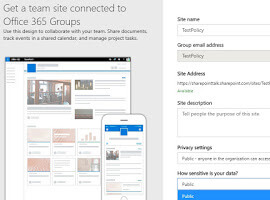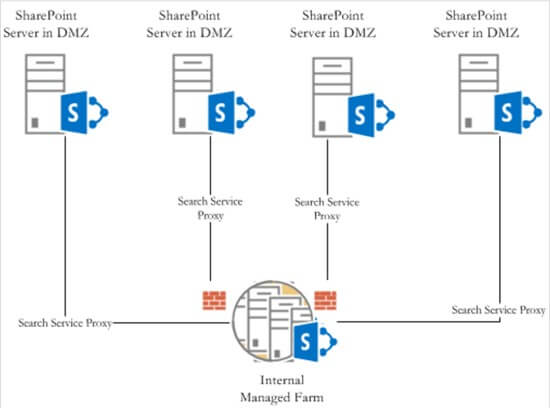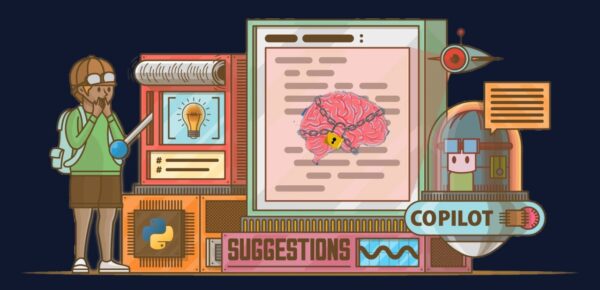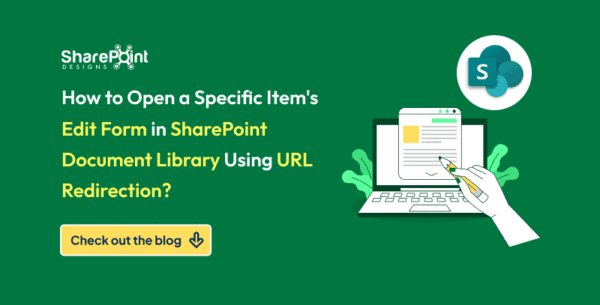There are never any shortages on the needs to customize SharePoint and OneDrive to fit your business needs. In this post the SharePoint Engineering team will highlight the top questions and answers on the SharePoint Framework (SPFx) and modern experiences.
I’m on classic experience so cannot use SharePoint Framework, is this correct?
That is not correct. You can use SharePoint Framework client-side web parts also on classic SharePoint experience, meaning classic team sites and publishing sites. You cannot use however SharePoint Framework extensions as they are only available in the modern experience.
It’s important to notice that the actual underlaying site type does not impact on the support as you can have both classic and modern experience with classic team sites. We see quite a few customers also using SharePoint Framework client-side web parts on a classic publishing sites as that’s quite common site type for corporate portals. Communication sites are also getting better and better with additional capabilities, so we would recommend on checking what’s possible with them, rather than just keep on using classic publishing capabilities.
When will SharePoint 2016 support SharePoint Framework?
SharePoint 2016 does support SharePoint Framework client-side web parts starting from the Feature Pack 2 version. This means that you can use SharePoint Framework to create web parts which are then visible or available on the classic experience. SharePoint 2016 does not support modern pages or modern experiences in general.
Will SharePoint 2019 support SharePoint Framework?
Yes. SharePoint 2019 will support SharePoint Framework and more broadly modern page experience, which means that you can build both SharePoint Framework client-side web parts and extensions for achieving your functional and technical requirements. This is great as you can use the same code base in both SharePoint Online and in on-premises.
It’s however important to notice that SharePoint Online evolves faster than on-premises deployments as there are always server-side dependencies with the SharePoint Framework versions. This means that when we release new versions, we can patch SharePoint Online as needed. As we do not however control the on-premises deployments, they will always be at least slightly behind from version and capability perspective.
I’m new to SharePoint Framework, how to get started?
Easiest way to get starter on learning SharePoint Framework is check our official documentation, which is updated on daily or weekly basis. This documentation contains guidance for developers, business analysts and architects.
We do provide tested getting started tutorials, which we keep up to date on each release we do. They are great way to get started to create your first client-side web part running in SharePoint Online in less than 10 minutes. Here are some resources to get started:
- Overview of the SharePoint Framework
- Getting started on SharePoint Framework
- SharePoint Framework enterprise guidance
If you find any gaps on our documentation or provided guidance, please do let us know, so that we can address those issue. Thanks for your valuable feedback advance.
I’m more an architect or business analyst, how would I know more on modern experiences?
Our development documentation also contains plenty of architect and business analyst content from the overall end-to-end understanding perspective as it’s important not just to understand the APIs, but also to understand the direction where we are heading with SharePoint in general.
Here are also other great resources from the documentation around the modern experiences
- SharePoint Starter Kit
- Modernizing your classic SharePoint sites
- Customizing the “modern” experiences in SharePoint Online
How to transform my existing farm solutions or add-in model customizations to SharePoint Framework?
There’s unfortunately no magical software which would do this automatically, meaning that this is an actual transformation or migration project for the existing code. If you are moving into SharePoint Online, you will need to transform your existing farm solutions and the target model should be SharePoint Framework as is the model which we use also in SharePoint engineering as all the modern experiences are being built with the SharePoint Framework.
In general, these kind of transformation projects should not just be about the actual code and to perform direct technical transformation from one model to another. These are rather great opportunities to review and assess what’s already being built, how are they used and how would those business or functional requirements have achieved using modern experiences. In general, we do recommend following transformation process:
- Readiness – It’s important to understand what’s possible with SharePoint Framework, so having understanding on the possibilities and options is a key to start this process properly.
- Assessment – Identify what kind of solutions and customizations exists. Key is to concentrate on functional and business requirements and not blindly do technical analyses. This is also great opportunity to reduce the scope by identifying unused features and reduce the scope of needed customizations where possible.
- Planning – Designing new capabilities based on the requirements gathered in the assessment phase.
- Implement – Actual implementation of the SharePoint Framework customizations and other modern capabilities matching defined requirements
- Deploy – Deployment of the solutions to your end users. Replacement of the old functionalities with the new SharePoint Framework implementations.
If you are looking into understanding what’s possible and how to achieve typical functional requirements with modern experiences, we recommend you to take advantage on the SharePoint Starter Kit. It’s a great solution to take advantage from demonstration and evaluation perspective. You can also use it to provide you functionalities as source code is freely available in the GitHub for you to take advantage in anyway way you prefer.
How can I follow up on what’s getting released with SharePoint Framework?
SharePoint has the most active community in the Microsoft 365. There are plenty of awesome conferences and events all around the world, which you should take advantage. We also release news and announcements on different channels almost on daily basis, so it’s recommend using the social media channels where possible to keep up to date on what’s happening around SharePoint.
In the SharePoint Developer side, we have even weekly community calls where we always go through the latest news from engineering and also have great community demos. Here are some great resources to keep up to date on the SharePoint development topics.
- SharePoint Development Blog – Official announcements and updates from the SharePoint side
- SharePoint Samples – Engineering and community provided samples on SharePoint development
- SharePoint Development Community (http://aka.ms/sppnp) – All links to assets and open-source projects
- SharePoint Monthly Community Call – Monthly update on the SharePoint development news and updates on the documentation, samples, open-source projects and other aspects
- Bi-weekly SharePoint Framework community call – Concentration on SharePoint Framework and client-side development topics
- Bi-weekly SharePoint Dev general community call – Concentration on end-to-end solution designs, CSOM, SP Graph APIs, Flow, PowerApps, PowerShell etc.
- SharePoint YouTube Video Channel – Community call recordings, tutorials and guidance videos
- SharePoint on Twitter – Great way to follow the latest news also on development side
- OfficeDev on Twitter – Includes development news across Office 365 topics
- SharePoint Development in Microsoft Tech Community – Discussions
- SharePoint Development Issue List – for reporting development issues to SharePoint engineering
Where is the latest documentation of SharePoint Framework?
This is easy. All latest documentation of the SharePoint Framework is available from the docs.microsoft.com platform at http://aka.ms/spdev-docs which will redirect you to https://docs.microsoft.com/en-us/sharepoint/dev.
We are updating this guidance on daily or weekly basis based on our release roadmap and your feedback. Please do let us know if there is any specific guidance which you’d like us to concentrate more. Thanks for your input advance
As always the team in interested in hearing from you, so use the resources provided on https://developer.microsoft.com/SharePoint/ to stay up to date, submit issues, and get valuable training resources.
Take our Survey:
Can you take 4 minutes today and help us gain insights, with this short survey for the Microsoft 365 & Azure Community? We would love to hear from you and invite you to share your thoughts.









 Using a SharePoint Online list as a Knowledge source via ACTIONS in Copilot AI Studio
Using a SharePoint Online list as a Knowledge source via ACTIONS in Copilot AI Studio
